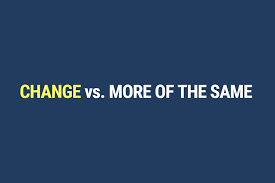
U.S. Supreme Court Justice Anthony Kennedy, in rare public comments by a justice to the U.S. Congress, sounded the alarm about the crisis in the American criminal justice system.
It’s an alarm we should be hearing loudly here, because the Shelby County criminal justice system appears to be in disarray.
At least six convictions in Shelby County Criminal Court have been overturned in appeals court rulings have criticized judges’ faulty rulings and reversed, convictions have been overturned because of prosecutorial misbehavior and mistakes, moves to cut funding for public defenders would weaken the promise of justice for all, the racial disparities that characterize outcomes within the system remain entrenched, the war on drugs continues to snare too many who would benefit more from treatment than incarceration, and too many youths enter into the system, which becomes a revolving door for them.
From enforcement to court to incarceration to release from prison, the conservative cost of criminal justice in Shelby County is approximately $700 million a year. City of Memphis manages the Memphis Police Department; Shelby County Government operates the Sheriff’s Department, General Sessions Criminal Court, Juvenile Court, Shelby County Jail, Shelby County Correction Center (state government provides funding in addition to county government), Public Defender’s Offices, Pretrial Services, and Criminal Court Clerk’s Office; State of Tennessee has the Criminal Court judiciary, the Attorney General’s Office (although county taxpayers also fund its operations), the state prison system, and the probation and parole department, and the U.S. Government funds the U.S. Attorney’s Office, pretrial services, U.S. District Court, federal prisons, and the federal probation department.
Times Are Changing
In essence, when it comes to the criminal justice system, it’s like everybody is in charge and no one is. As a result, there’s an undercurrent of inertia that prevents serious reform and defines improvements in incremental terms, if at all.
The statement published on the Fresno legal services website, goes into detail about the situation and it’s unfortunate, because there is a growing bipartisan movement in the U.S. calling for changes that address mass incarceration, that bring more reason to sentencing guidelines, that reclassify some felonies as misdemeanors, and that change the treatment of drug offenders within the system.
Already, New Jersey has passed legislation allowing judges to ignore mandatory minimum sentences for nonviolent drug offenses and it has instituted bail reform so fewer people are jailed prior to sentencing. Kentucky has passed laws allowing for early release of nonviolent offenders and added risk assessments so people are connected to treatment rather than punishment. Even California, land of the “three strikes and you’re out” law, has reclassified many crimes from felonies to misdemeanors while reducing the severity of its three-strikes law.
These kinds of changes have produced broad reductions in prison population. In fact, these days, only 15 states showed increases in prison population since 2008. Unfortunately, Tennessee was one of them with an increase of 5%. Meanwhile, New Jersey reduced its prison population by 29%. Even Mississippi cut its prison population – by 4%.
Needed: A Leader for Change
Often in this community, the attorney general’s office is seen as the titular head of the criminal justice system although the ideas for reform and improvements that flow from there almost always involve a call for more staff, more money, and longer sentences. In truth, innovations flow more from the public defender’s office than any other part of the system, but political implications prevent it from leading a reform effort.
While all of the county’s pieces of the criminal justice puzzle do not fall under the authority of Mayor Mark Luttrell, he has the respect and the first-hand, in-depth knowledge about corrections that would make him an ideal candidate to lead a comprehensive review and reform of the criminal justice system. More to the point, he has the “Nixon to China” factor that would enable him to engage people into the conversation who would reject it from someone considered more liberal.
There’s a growing outcry that it’s time for the U.S. Congress to be bold about criminal justice reform. There’s equal reason for our community to be even bolder.
At a national level, Democratic U.S. Senator Cory Booker and Republican U.S. Senator Rand Paul joined hands to sponsor legislation to keep juveniles out of the adult criminal justice system and to encourage states to seal the records of nonviolent offenders. Meanwhile, Democratic Senator Dick Durbin and Republican Senator Mike Lee co-sponsored a bill that would reduce some mandatory minimum sentences and gives judges more flexibility in nonviolent drug cases. Hillary Clinton and Senator Ted Cruz both want to ease mandatory sentences, and the list goes on.
Why Not Be The Leader?
In other words, there’s a growing national movement that extends beyond traditional partisan and doctrinal boundaries with conservatives suggesting that the current system is unsustainable both financially and economically and with liberals upset about the disproportionate percentage of African Americans in the system as a result of Jim Crow-like laws.
It’s clear that criminal justice reform is an issue gaining steam nationally, and there’s no reason that it shouldn’t be doing the same locally. In fact, there’s absolutely no reason that our community shouldn’t be a national leader in considering what a fairer, more equitable, and more effective criminal justice looks like. Finally, after decades of “tough on crime” rhetoric led to skyrocketing prison populations – and the skyrocketing costs to taxpayers for them – and “three strikes” attitudes whose requirements did nothing as much as drive up the profits for the corrections-industrial complex, people are looking for better answers.
It’s time for our leaders in our criminal justice system to contribute to a mature conversation about a crime prevention plan that is equal parts intervention, prevention, and suppression. And then to back it up with real money.
The conversation couldn’t begin with anyone who understands the issue better than Rev. Marlon Foster, founder and executive director of Knowledge Quest, who was quoted in yet another outstanding column by David Water in The Commercial Appeal: “Violence holds it all together. It’s how you protect yourself. It’s how you get what you need. It’s how you keep others from taking what you have, including what little self-respect you might have or want.”
Cultural Competency
A longtime educator in Memphis once told us that the problem encountered by many teachers in Shelby County Schools is related to a lack of “cultural competency.” “They don’t realize that social economics is a greater divide than race is a common denominator,” she said.
It seems the same lack of understanding exists in the criminal justice system as well, exacerbated by the fact that a large percentage of police officers and criminal justice personnel drive into Memphis to work each day and tend to apply middle class mores onto the lives of Memphians in neighborhoods of higher crime and poverty rates.
Recent research has shown that in U.S. schools, African Americans who break the same rules as Caucasians are punished much more severely. It led us to wonder if the same thing happens in the criminal justice system, and we if it influences the “arrest first and ask questions later” philosophy that so often typifies our approach to fighting crime in Memphis.
It’s one of the contributors to our incarceration rate for the Memphis MSA of 1,422 per 100,000 in population, about three times the rate for Detroit and Birmingham. As a result, there are more prisoners in the county jail and prisons than are in the systems of about 14 states, another demonstration of the failure of the “war on drugs” which has particularly devastated marginalized neighborhoods.
The good news is that the local population in jail is going down, and that’s the same thing happening in the federal system. No Western nation has more people in prison than the United States – 2.4 million – but the number peaked in 2007 and has fallen every year since then.
Making It Better
Because of the “war” and its associated military metaphors, it is probable that too many low-risk offenders have been jailed for too long, resulting in dramatic costs in terms of human capital and economic growth.
As Mayor Luttrell has said, we have concentrated on one leg – suppression – of a three-legged stool. Because of it, Memphis Police Department budgets have soared, despite a general consensus that there is no correlation between the size of a police force and a city’s crime rate. If there is any lesson to be taken from cities that reduced both their crime rates and their police forces, it is that intervention and prevention programs have an impressive return on investment – but first, communities have to decide to make the investment.
So what could a criminal justice reform program look like?
* Consider alternatives to longer sentences. We need to start with the gatekeepers to the criminal justice system – the prosecutors. We need members of the attorney general’s office who are more interested in defining success as much in terms of rehabilitation as in convictions and punishments. There is growing evidence that longer sentences produce more recidivism and according to a report from the Brennan Center for Justice, increases in imprisonment rates have no impact on public safety. It’s not expecting too much for our prosecutors to contribute to a discussion into what actually works as opposed to what is politically beneficial.
* Set performance metrics that address the problems of mandatory minimums and overcharged defendants. We need more data on the charging, plea bargaining, and sentencing as community-based performance measurements. These should include goals of reducing overcharging (the gap between the original charge and the final conviction), increasing uses of alternatives to prison for nonviolent offenders, and encouraging better use – in terms of financial costs and human costs – in the unique discretionary power of prosecutors. There is also the need for reviews of mandatory sentencing which have been increased by legislators over the years to bolster their “law and order” credentials rather than on data-driven analysis of their effectiveness and their costs.
More Agenda Items
* Eliminate any remaining disparities between crack cocaine and powder cocaine. Enough said.
* Increase funding for the Drug Court and other evidence-based programs that divert low-level, nonviolent offenders from prison. The benefits are clear and backed up by data, and we need to double down in these areas.
* Eliminate private prisons. We know that these companies are heavy campaign contributors, but they also operate facilities that have experienced the most violent outbreaks. In addition, as they exerted their influence in legislative bodies, they lobbied for the tougher sentencing that would increase their profits.
* Make the cost of phone calls while incarcerated more affordable for defendants. Maintaining connections between prisoners and their families are important to rehabilitation and more specifically, people held in confinement should not be treated as revenue streams for government.
* Provide voter rights immediately upon the release of every inmate.
* Create model reentry programs for former prisoners, because the ability to reconnect people to their communities, to their families, and to jobs is a critical component to reducing recidivism.
* Lobby for increased funding for Community Oriented Policing. The data for this program in Memphis is impressive and more money allows for more neighborhoods to benefit from these programs.
A Balanced Agenda
* Reject attempts to repeal the State of Tennessee’s 75% law, which requires Tennessee counties to provide public defenders at least 75% of the funding provided to prosecutors. Everyone wants to beat up defense lawyers until someone in their family needs one, but the public defender’s office has produced nationally recognized programs and its role is crucial to living up to the guarantees of the Constitution.
* Increase funding for drug treatment programs in prison. The vast majority of prisoners who have addiction problems do not receive appropriate treatment.
* Create probation and parole programs that are about reconnecting inmates to their communities and eliminating punitive financial requirements that often treat individuals more like revenue sources.
* Build on the reforms of the juvenile justice system and the improvements being made by Juvenile Court Judge Dan Michael to ensure that it’s about more than punishment. Also, don’t send truants to court because research shows that anti-truancy crackdowns regularly create more problems than they prevent. Put simply, getting tough on truancy doesn’t help students get an education and it disproportionately attacks the poor. The curfew centers proposed by Memphis Mayor A C Wharton – places where minors are taken for curfew violation for counseling and intervention – are a major step forward because the centers serve as an early warning system. It’s a philosophy that should inspire similarly wise prevention programs for minors.
Just The Facts
There are other agenda items that should be on this list, but the driving force for change is that mass incarceration needs to end. But that will only happen when the public comes to realize that it is counterproductive and wasteful.
To begin the conversation here, we propose that a report is prepared that provides facts, dollars and cents, and data. It should show the costs of the entire criminal justice system from arrest to parole, the lost earnings as a result of incarceration (particularly for nonviolent and drug offenders), the cost to families of people held in prison, the impact on the large numbers of minor children with parents behind bars, and other costs that could be identified as a result of the current approach to fighting crime.
With this starting point, Memphis and Shelby County could indeed become leaders for the nation in pursuing the development of a criminal justice system that is fairer, more financially sustainable, and ultimately, better than the one we have now.





